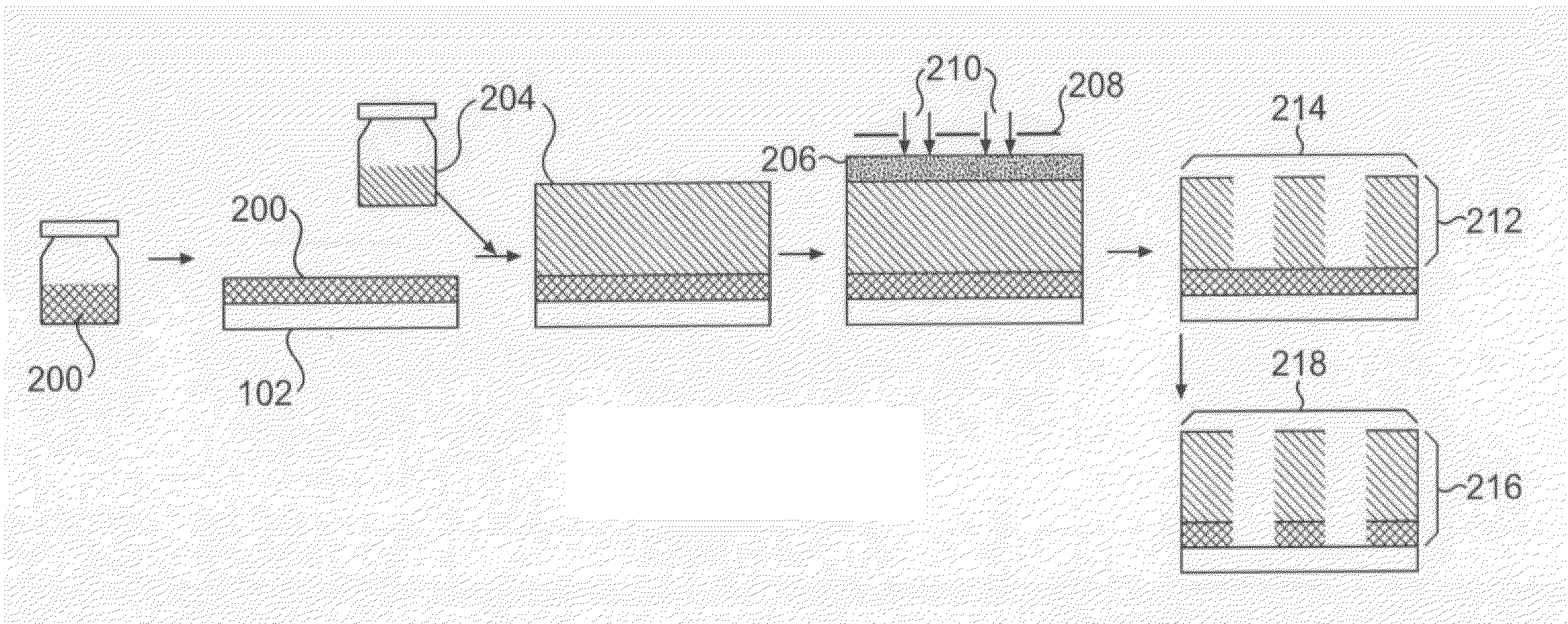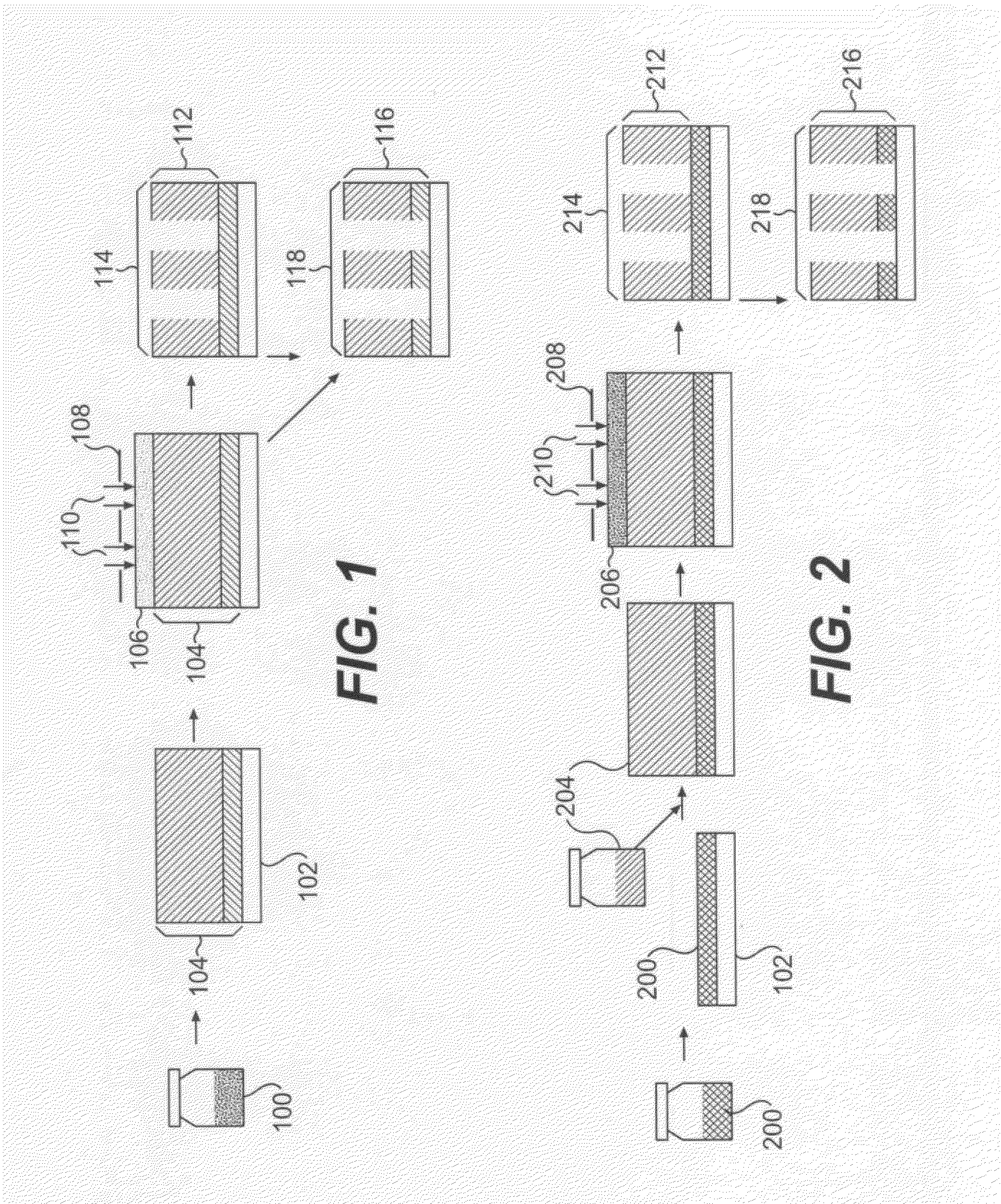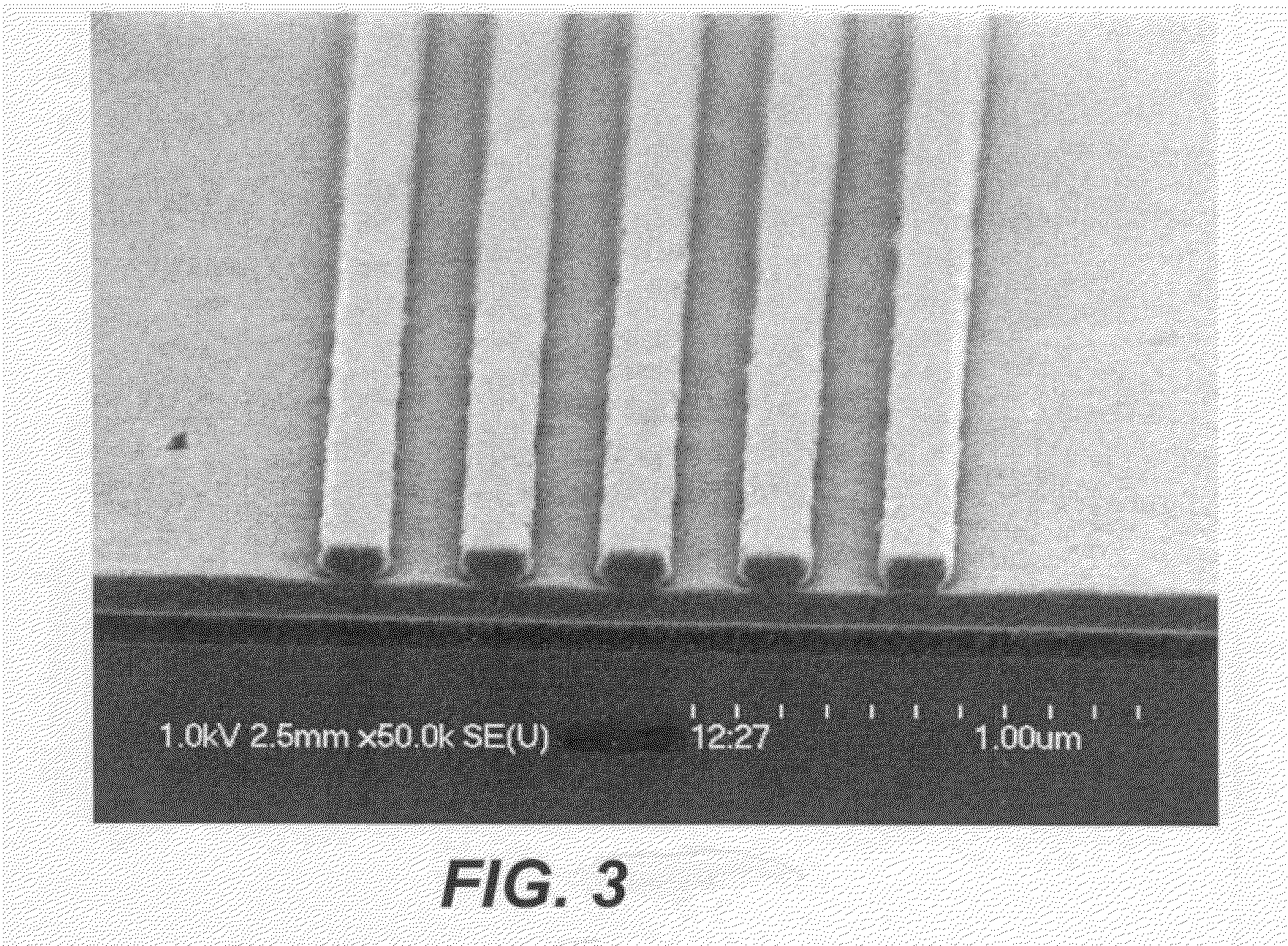Self-segregating multilayer imaging stack with built-in antireflective properties
a multi-layer imaging and self-segregation technology, applied in the field of deep ultraviolet (duv) photolithography and semiconductor fabrication, can solve the problems of increased cost, increased cost of ownership, and more complex integration path, and achieve the effect of reducing the number of processing steps
- Summary
- Abstract
- Description
- Claims
- Application Information
AI Technical Summary
Benefits of technology
Problems solved by technology
Method used
Image
Examples
examples
[0054]Examples 1 and 2 show two embodiments of this invention for lithographic applications and illustrate the properties and advantages of the materials and formulations described.
example 1
[0055]A formulation was prepared by dissolving 402 mg of resist polymer (50:50 copolymer of 1,1,1-trifluoro-2-trifluoromethyl-2-hydroxy-pent-4-yl methacrylate and 1-ethylcyclopentyl methacrylate), 160 mg of solution of triphenylsulfonium nonaflate (20 wt % in PGMEA), 402 mg of silsesquioxane (SSQ) polymer (60:40 copolymer of 1-(4-acetoxyphenyl)ethyl-SSQ and 1-phenylethyl-SSQ) and 883 mg of solution of N-phenylbenzimidazole (0.5 wt% in PGMEA) in 5.67 g of PGMEA. The solution was filtered through 0.2 μm syringe filter.
example 2
[0056]The formulation of EXAMPLE 1 was spin-coated at 3000 RPM on a wafer that was previously coated with ARC-29A (Brewer Sci. 78 nm) and baked at 155° C. for 90 seconds. The wafer was then exposed using a 193 nm ministepper (NA=0.6, binary mask) using 160 nm line-and space mask pattern. The wafer was then baked at 110° C. for 60 seconds and puddle-developed in a standard 0.26N N tetramethyl ammonium hydroxide (TMAH) developer for 30 seconds, rinsed with water, and dried. FIG. 3 illustrates the SEM cross-sections of patterns obtained.
[0057]In use, FIG. 1 illustrates a processing sequence using a self-segregating Resist / BARC imaging system according to the present invention. In FIG. 1, a formulation 100 containing multiple components and additives for the formation of a self-segregated resist / BARC multilayer as described herein is spin-cast onto a wafer 102 and baked. The vertical segregation process takes place during the coating and / or baking step, leading to the formation of a res...
PUM
| Property | Measurement | Unit |
|---|---|---|
| Thickness | aaaaa | aaaaa |
| Thickness | aaaaa | aaaaa |
| Wavelength | aaaaa | aaaaa |
Abstract
Description
Claims
Application Information
 Login to View More
Login to View More - R&D
- Intellectual Property
- Life Sciences
- Materials
- Tech Scout
- Unparalleled Data Quality
- Higher Quality Content
- 60% Fewer Hallucinations
Browse by: Latest US Patents, China's latest patents, Technical Efficacy Thesaurus, Application Domain, Technology Topic, Popular Technical Reports.
© 2025 PatSnap. All rights reserved.Legal|Privacy policy|Modern Slavery Act Transparency Statement|Sitemap|About US| Contact US: help@patsnap.com



